 | TODAY IN SCIENCE HISTORY NEWSLETTER - 21 MARCH |
| Feature for Today |
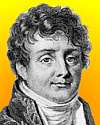 On 21 Mar 1768, Jean-Baptiste-Joseph Fourier was born, the mathematical physicist whose life has to be seen in the context of the French Revolution and its reverberations. One might say his career followed the peaks and troughs of the political wave. On 21 Mar 1768, Jean-Baptiste-Joseph Fourier was born, the mathematical physicist whose life has to be seen in the context of the French Revolution and its reverberations. One might say his career followed the peaks and troughs of the political wave. He was in turns: a teacher; a secret policeman; a political prisoner; governor of Egypt; prefect of Is�re and Rh�ne; friend of Napoleon; and secretary of the Acad�mie des Sciences. Many of the "Big Name" scientists and mathematicians tend to be known in a one-dimensional way for a one specific lasting legacy. Perhaps the name comes to your mind for the Fourier Series. To see Fourier's life as anything but one-dimensional, read Joseph Fourier - Politician and Scientist. |
| Book of the Day | |
| |
| Quotations for Today | |
 | "The deep study of nature is the most fruitful source of mathematical discoveries. By offering to research a definite end, this study has the advantage of excluding vague questions and useless calculations; besides it is a sure means of forming analysis itself and of discovering the elements which it most concerns us to know, and which natural science ought always to conserve. " |
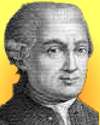 | "I have always loved to begin with the facts, to observe them, to walk in the light of experiment and demonstrate as much as possible, and to discuss the results." |
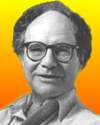 | "Scientists tend to be skeptical, but the weakness of the community of science is that it tends to move into preformed establishment modes that say this is the only way of doing science, the only valid view." - Walter Gilbert, American molecular biologist (born 21 Mar 1932) |
| QUIZ | |
| Before you look at today's web page, see if you can answer some of these questions about the events that happened on this day. Some of the names are very familiar. Others will likely stump you. Tickle your curiosity with these questions, then check your answers on today's web page. | |
| Births | |
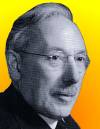 |  David Keilin, born 21 Mar 1887, was a Russian-British biochemist who discovered certain enzymes he called cytochromes. Like haemoglobin, the cytochromes contain iron. Cytochrome is a pigment found in some cells, such as bacteria and yeast. David Keilin, born 21 Mar 1887, was a Russian-British biochemist who discovered certain enzymes he called cytochromes. Like haemoglobin, the cytochromes contain iron. Cytochrome is a pigment found in some cells, such as bacteria and yeast. What function of the cell involves cytochromes? What function of the cell involves cytochromes? |
| Deaths | |
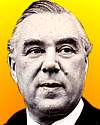 |  Patrick (Christopher) Steptoe (1913-1988) was a British scientist and medical researcher who, with Robert Edwards, perfected in-vitro fertilization of the human egg. Their technique made possible in the birth of Louise Brown, the world's first "test-tube baby." Patrick (Christopher) Steptoe (1913-1988) was a British scientist and medical researcher who, with Robert Edwards, perfected in-vitro fertilization of the human egg. Their technique made possible in the birth of Louise Brown, the world's first "test-tube baby."  In what decade was the world's first "test-tube baby" born? In what decade was the world's first "test-tube baby" born? |
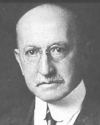 |  Carl Koller (1857-1944) was Czech-born American ophthalmic surgeon whose introduction of a new surface anesthetic in eye surgery (1884) inaugurated the modern era of local anesthesia. He discovered this substance when he noticed it had a numbing effect on the tongue and, after experimenting with animals, he introduced it as a local anaesthetic in ophthalmology. It was also quickly adopted for nose and throat surgery and for dentistry. Carl Koller (1857-1944) was Czech-born American ophthalmic surgeon whose introduction of a new surface anesthetic in eye surgery (1884) inaugurated the modern era of local anesthesia. He discovered this substance when he noticed it had a numbing effect on the tongue and, after experimenting with animals, he introduced it as a local anaesthetic in ophthalmology. It was also quickly adopted for nose and throat surgery and for dentistry.  What substance did Koller instroduce as a local anesthetic? What substance did Koller instroduce as a local anesthetic? |
| Events | |
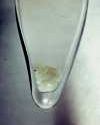 |  On 21 Mar 1942, a secret report was submitted suggesting a name for a new artificial element. The paper was held secret until after WW II, when it was published by the Journal of the American Chemical Society in 1948. The authors were Glenn Seaborg and Arthur C. Wahl. On 21 Mar 1942, a secret report was submitted suggesting a name for a new artificial element. The paper was held secret until after WW II, when it was published by the Journal of the American Chemical Society in 1948. The authors were Glenn Seaborg and Arthur C. Wahl.  What was the name the authors chose for the new element? What was the name the authors chose for the new element? |
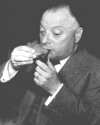 |  On 21 Mar of a certain year, Wolfgang Pauli published his "exclusion principle" in an article in Zeitschrift f�r Physik. Pauli introduced the idea that two nearby electrons cannot be in exactly the same state at the same time. For this, now fundamental, contribution to quantum mechanics, he was awarded a Nobel Prize. On 21 Mar of a certain year, Wolfgang Pauli published his "exclusion principle" in an article in Zeitschrift f�r Physik. Pauli introduced the idea that two nearby electrons cannot be in exactly the same state at the same time. For this, now fundamental, contribution to quantum mechanics, he was awarded a Nobel Prize.  In which decade of his life (age) did Pauli publish his "exclusion principle" ? In which decade of his life (age) did Pauli publish his "exclusion principle" ? |
| Answers |
When you have your answers ready to all the questions above, you'll find all the information to check them, and more, on the March 21 web page of Today in Science History. Or, try this link first for just the brief answers. Fast answers for the previous newsletter for March 20: B.F. Skinner; dynamo model; Isaac Newton; George Westinghouse; a solar eclipse. |
| Feedback |
 If you enjoy this newsletter, the website, or wish to offer encouragement or ideas, please send feedback by using your mail reader Reply button. If you enjoy this newsletter, the website, or wish to offer encouragement or ideas, please send feedback by using your mail reader Reply button. |
--
If you do not want to receive any more newsletters, Unsubscribe
To update your preferences and to unsubscribe visit this link
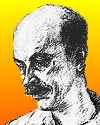


Δεν υπάρχουν σχόλια:
Δημοσίευση σχολίου